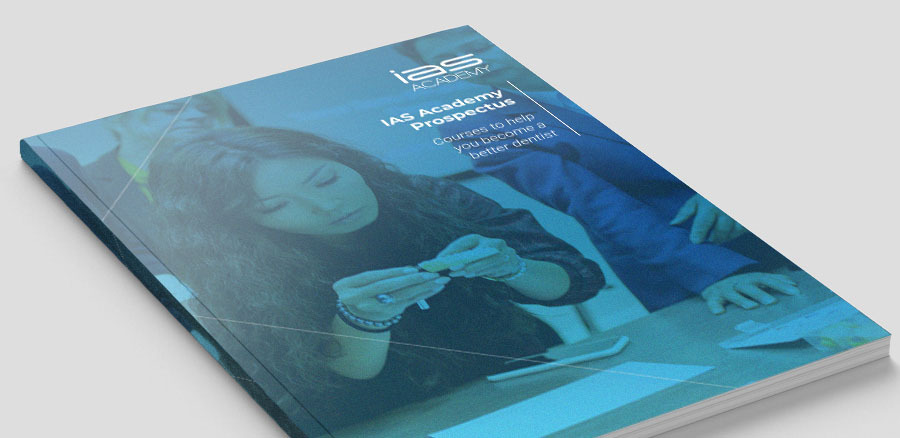A Simple First Step into Orthodontics
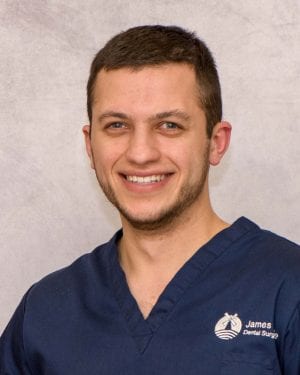
Treatment carried out by James Wade

Mr James Wade is a dental surgeon at M J Kenyon Dental Practice in Lytham St Annes, Lancashire.
As a newly qualified dentist I was interested in expanding my clinical skills, especially with regards to the private treatments I could offer my patients. The ClearSmile Inman Aligner training course stood out to me as an ideal way to introduce basic orthodontics as a treatment for my patients in general practice. The course was offered in a supportive environment, allowing the development of multiple skills useful in everyday general practice.
I have now been offering the ClearSmile Inman Aligner for six months and have found it to be a great stepping stone into the world of orthodontics and cosmetic dentistry. The IAS Academy offers comprehensive support from specialist orthodontists via the online forum by providing ideas, helping to develop treatment planning and enhancing clinical skills. As these skills improve, there are a variety of other training modules available to expand your skillset and treat more complex cases.
Case Presentation
My first ClearSmile Inman Aligner case was provided for a long-standing patient who had shown interest previously in straightening their teeth. Following completion of the IAS course I contacted this patient to enquire whether she still wanted to explore the idea of aligning her teeth. After a consultation, her main concerns were the alignment of her mandibular teeth and the overall shade of the teeth. She had always wanted braces, however, she did not want conventional appliances due to their appearance and the length of treatment. Overall, the patient had good oral hygiene and a minimally restored dentition.
Orthodontic Assessment
A full orthodontic assessment was performed (Table 1) and the treatment aims and compromises were discussed (Table 2).
| Measurement | Result |
|---|---|
| Skeletal | Class I |
| FMPA | Average |
| Lower Face Height | Average |
| Facial Asymmetry | None |
| Soft Tissues | Healthy |
| Overjet | 2mm |
| Overbite | 50% |
| Crossbite | None |
| Displacement on Closure | None |
| Incisor Relationship | Class I |
| Molar Relationship | Right: Class I | Left: Class I |
| Canine Relationship | Right: Class I | Left: Class I |
| Teeth Present | 7654321 | 7654321 | 1234567 | 1234567 |
| Centrelines | Coincident |
| Problem list |
|---|
| •Mild maxillary and mandibular crowding |
| Ideal treatment aims | |||
|---|---|---|---|
| •Align mandibular and maxillary teeth | •Improve shade of teeth | •Composite edge bonding to perfect shape of teeth | •Comprehensive orthodontics |
| Compromised treatment aims | ||
|---|---|---|
| •Orthodontics limited to anterior region | •Tooth whitening | •Composite edge bonding |
Treatment planning
The possible courses of treatment discussed with the patient included the ClearSmile Inman Aligner, another removable orthodontic aligner and referral to a specialist for fixed treatment. Following a detailed discussion the patient decided the ClearSmile Inman Aligner was the option most suited to her needs. The orthodontic risks associated with treatment including root resorption, relapse, devitalisation and soft tissue changes were discussed with the patient. I also explained the align, bleach and bond (ABB) concept to achieve an optimal cosmetic result, which she was receptive to. The patient’s main reasons for choosing the ClearSmile Inman Aligner were the discreet appearance and the cost effectiveness of treatment.
Maxillary and mandibular arch dual phase silicone impressions were taken and clinical photos uploaded to the IAS online forum. Using the IAS online Spacewize+™ arch evaluation software, I calculated the amount of crowding and required space. This space would be created using interproximal reduction (IPR) and progressive proximal reduction (PPR).
A full treatment plan and simulation of the final result was created following advice from the forum – this plan was sent to, and reviewed by the patient. I found that having the final simulation available for my patient to view helped with gaining informed consent prior to treatment and also encouraged the patient to be fully invested in the proposed treatment plan. I was advised by the IAS mentors that to increase patient compliance, it would be favourable to align the maxillary arch before the mandibular teeth. On a practical note, this approach allowed me to practise fitting the aligner, before fitting it on the often more complex mandibular arch.
Treatment
Maxillary arch alignment was completed and post-operative retention was gained with an Essix retainer. Alignment was then commenced on the mandibular arch. This proved more challenging; at first the teeth failed to move as quickly as expected. I posted on the forum and was advised to perform more IPR. Following another session the teeth moved as expected. Towards the final stages of treatment the LL2 distal contact point was not aligning, despite sufficient interproximal space, so composite was added to allow the aligner to exert a force locally and the tooth aligned within a few days.
Both the maxillary and mandibular arches were subsequently whitened using the Enlighten Whitening system. Upon final review, the patient decided that she was more than happy with the aesthetic result. The treatment plan was then revised and composite edge bonding was no longer deemed necessary, indicating the importance of patient involvement in their treatment plans.
Support
The IAS forum provided invaluable feedback, and ensured that this case was suitable given my relative inexperience with basic orthodontics. I felt reassured knowing that I would have prompt, helpful feedback to overcome any difficulties encountered during treatment.
Reflection
Having completed my first ClearSmile Inman Aligner case I have greater confidence in providing simple orthodontics in general practice. Transferable skills I developed through providing this treatment include better confidence in consultations, clinical photography and case documentation. With the continued support available from the IAS Academy I look forward to improving these skills further in the future.
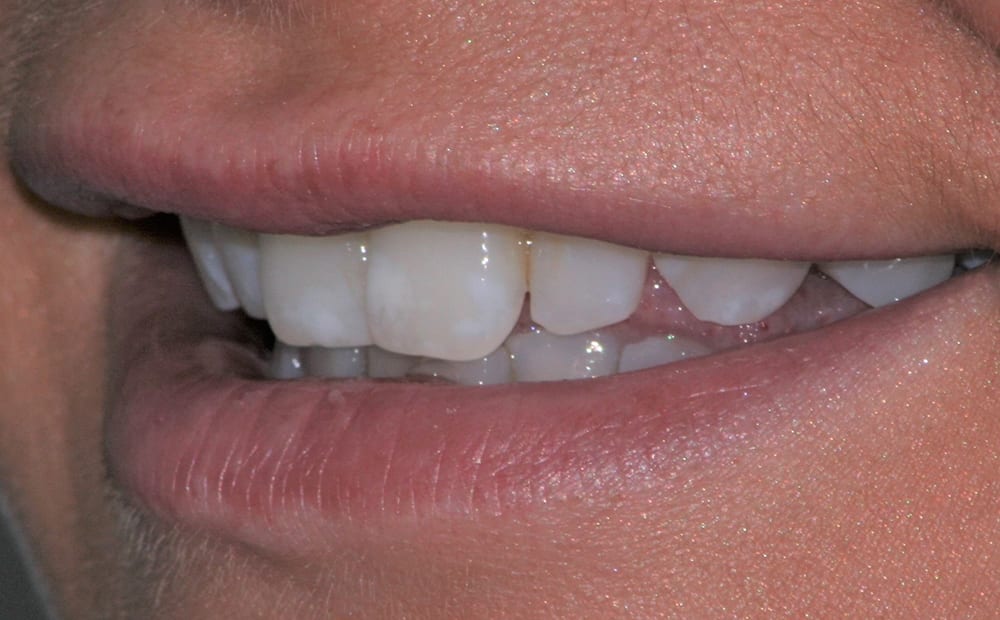 pre treatment left smile
pre treatment left smile 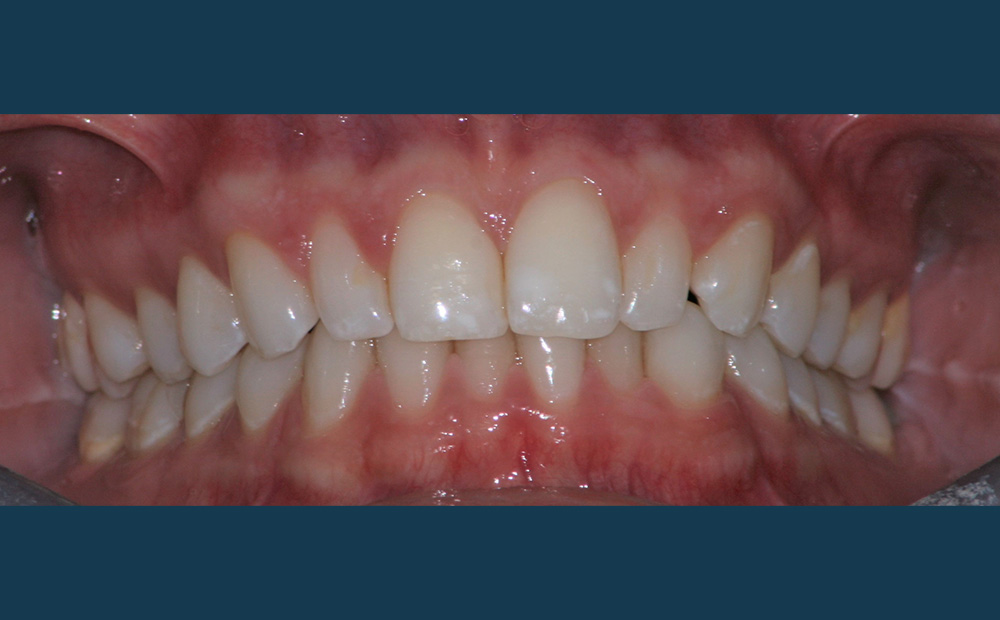 pre treatment retracted
pre treatment retracted 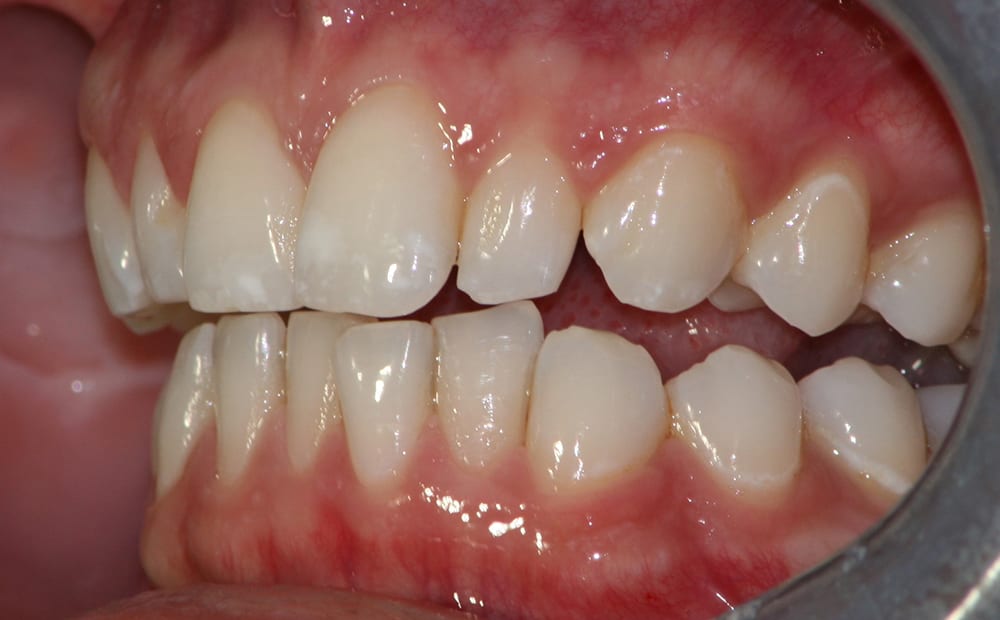 pre treatment retracted left smile
pre treatment retracted left smile 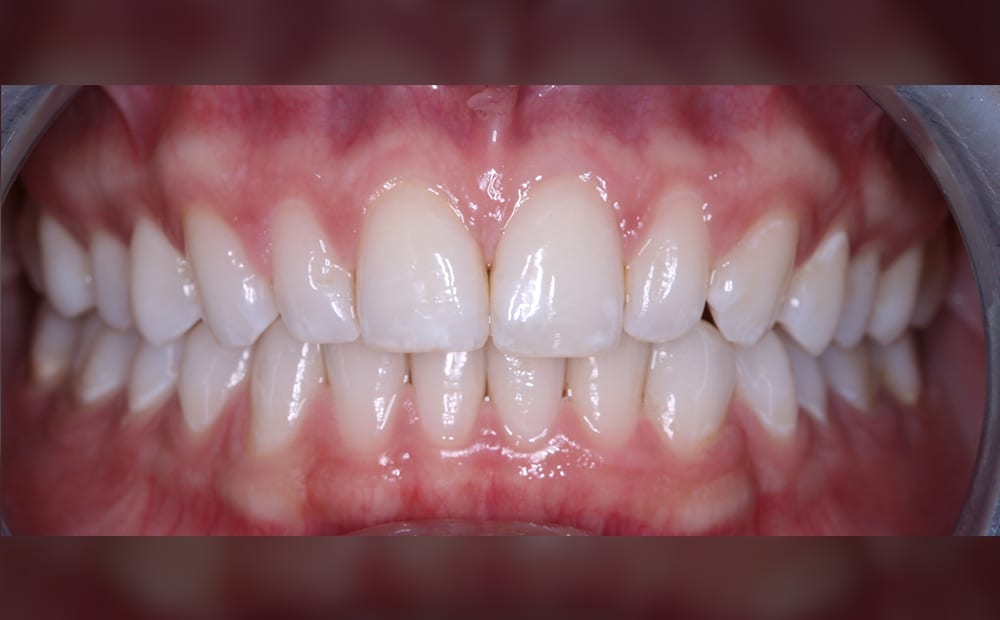 post treatment retracted
post treatment retracted 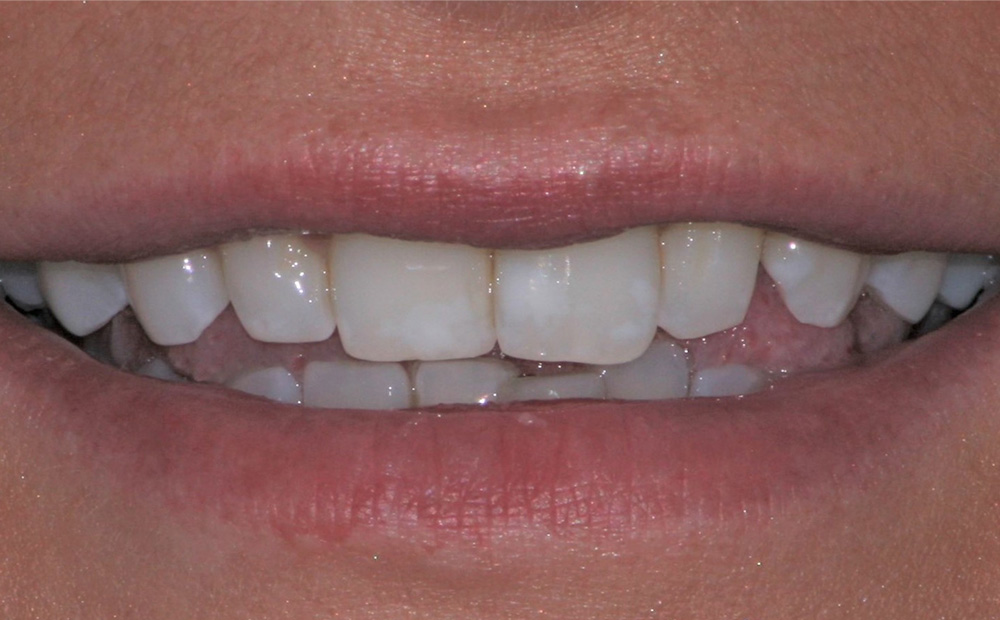 pre treatment smile
pre treatment smile 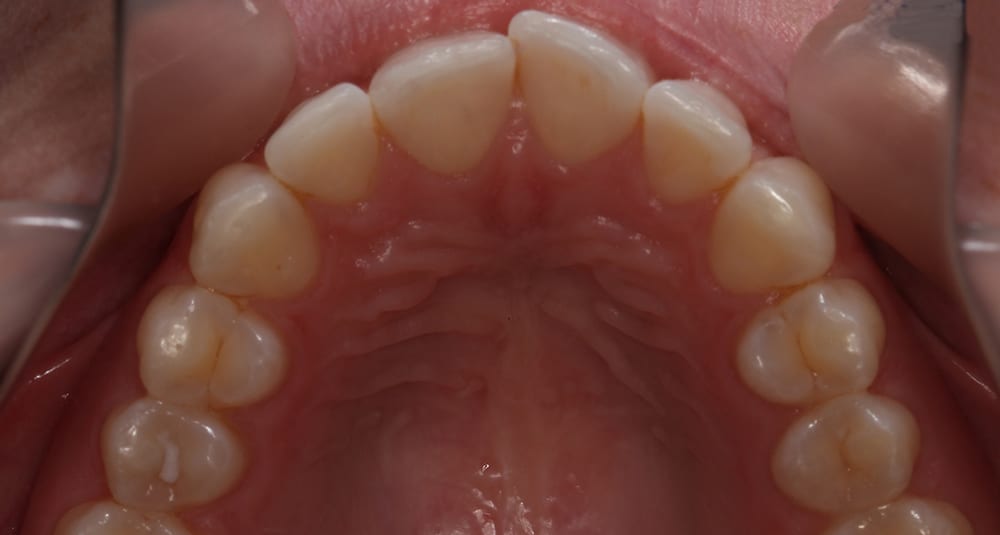 pre treatment upper occlusal
pre treatment upper occlusal 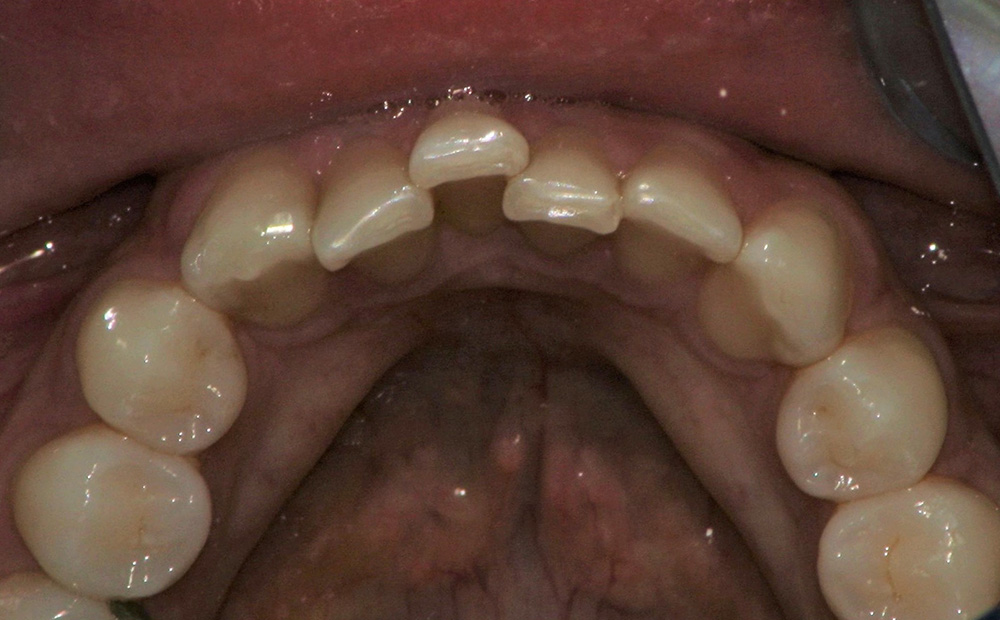 pre treatment lower occlusal
pre treatment lower occlusal 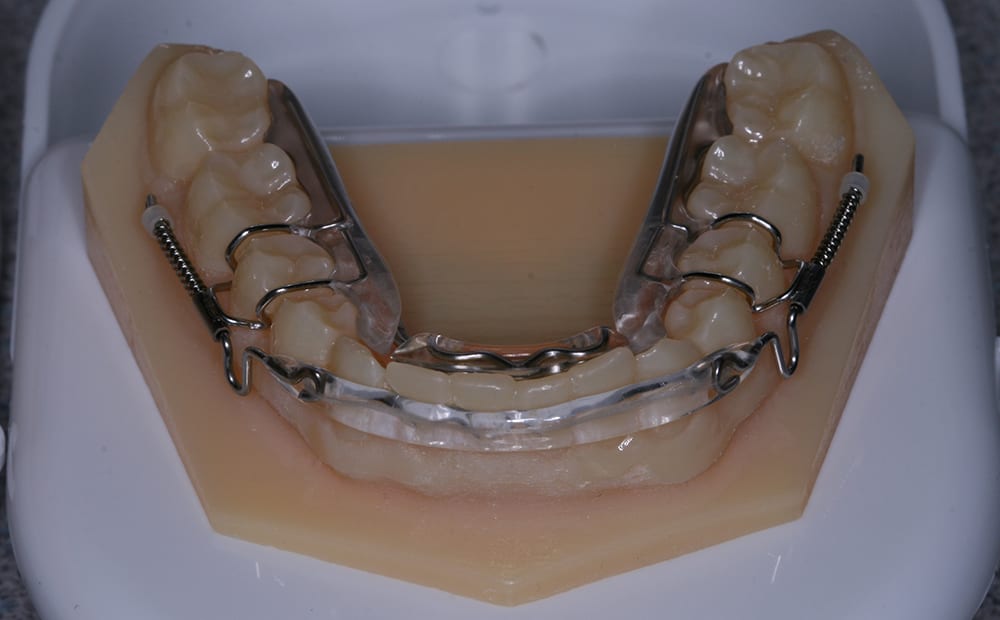 upper appliance
upper appliance 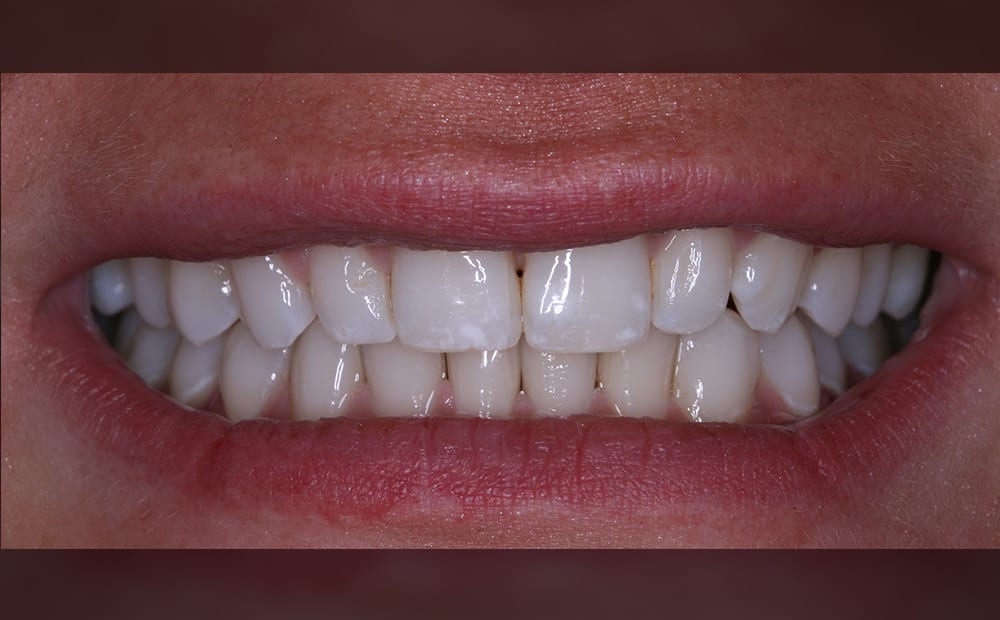 post treatment smile
post treatment smile 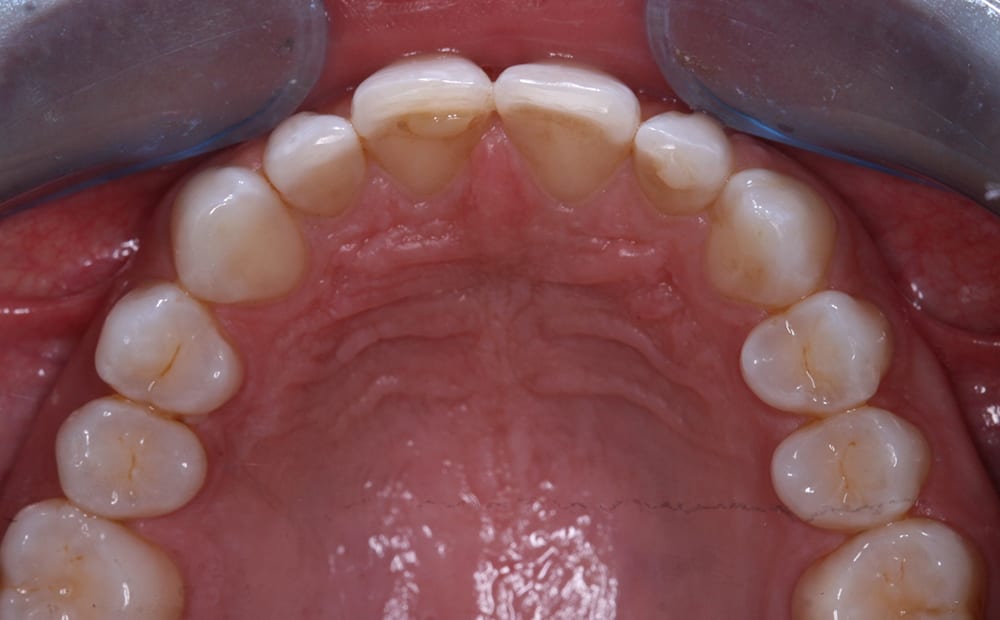 Post treatment upper occlusal
Post treatment upper occlusal 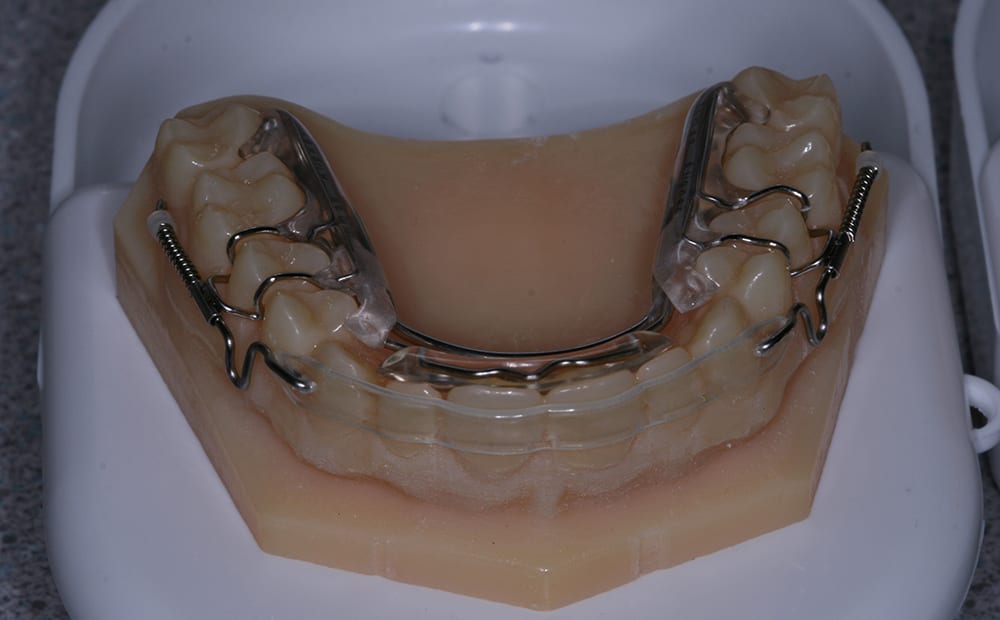 lower appliance
lower appliance 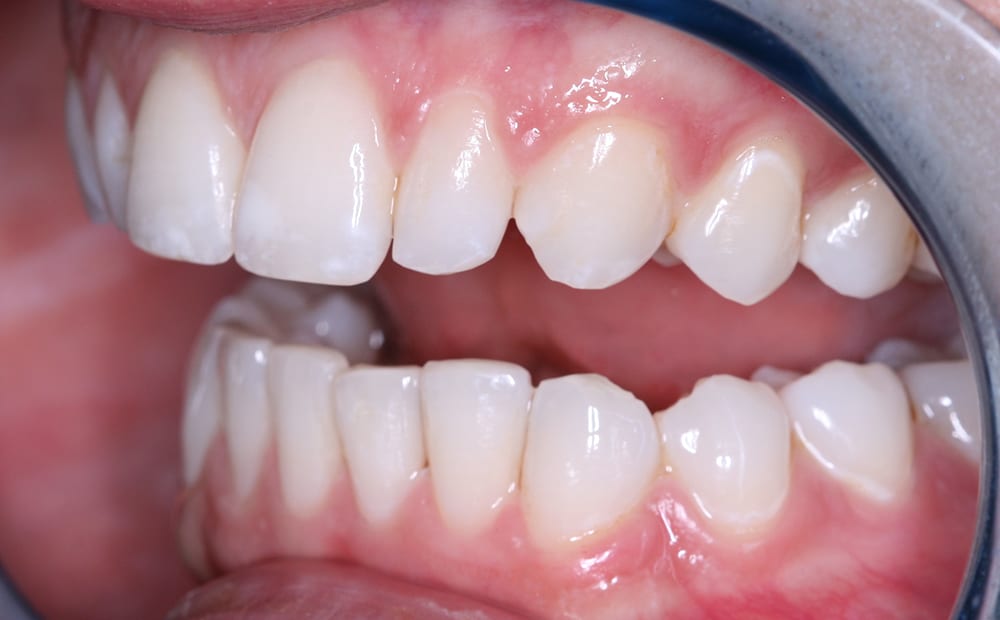 Pst treatment left lateral
Pst treatment left lateral 
